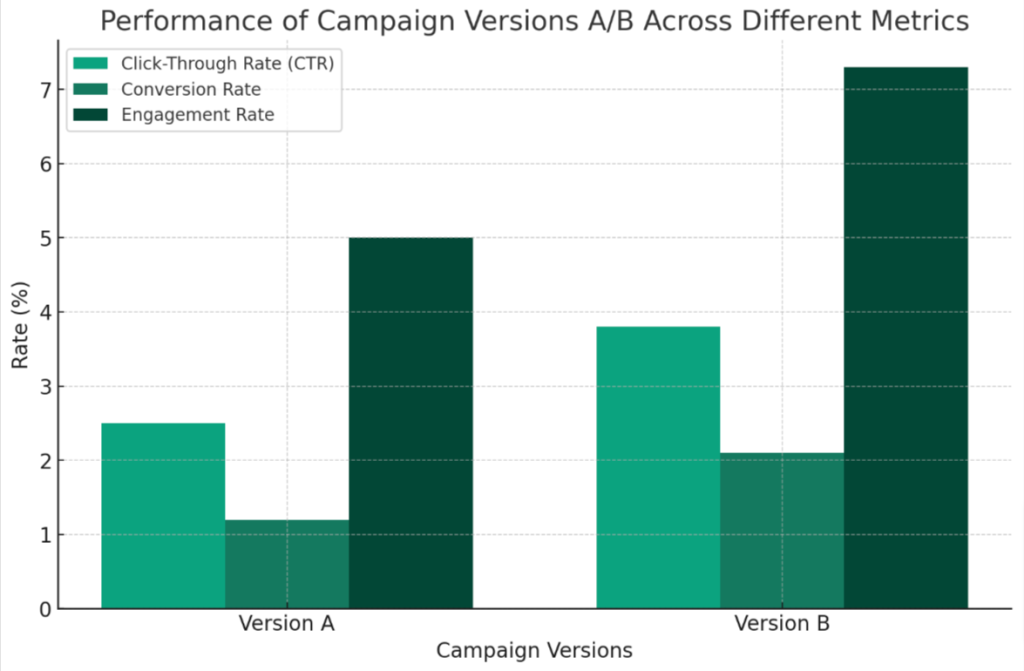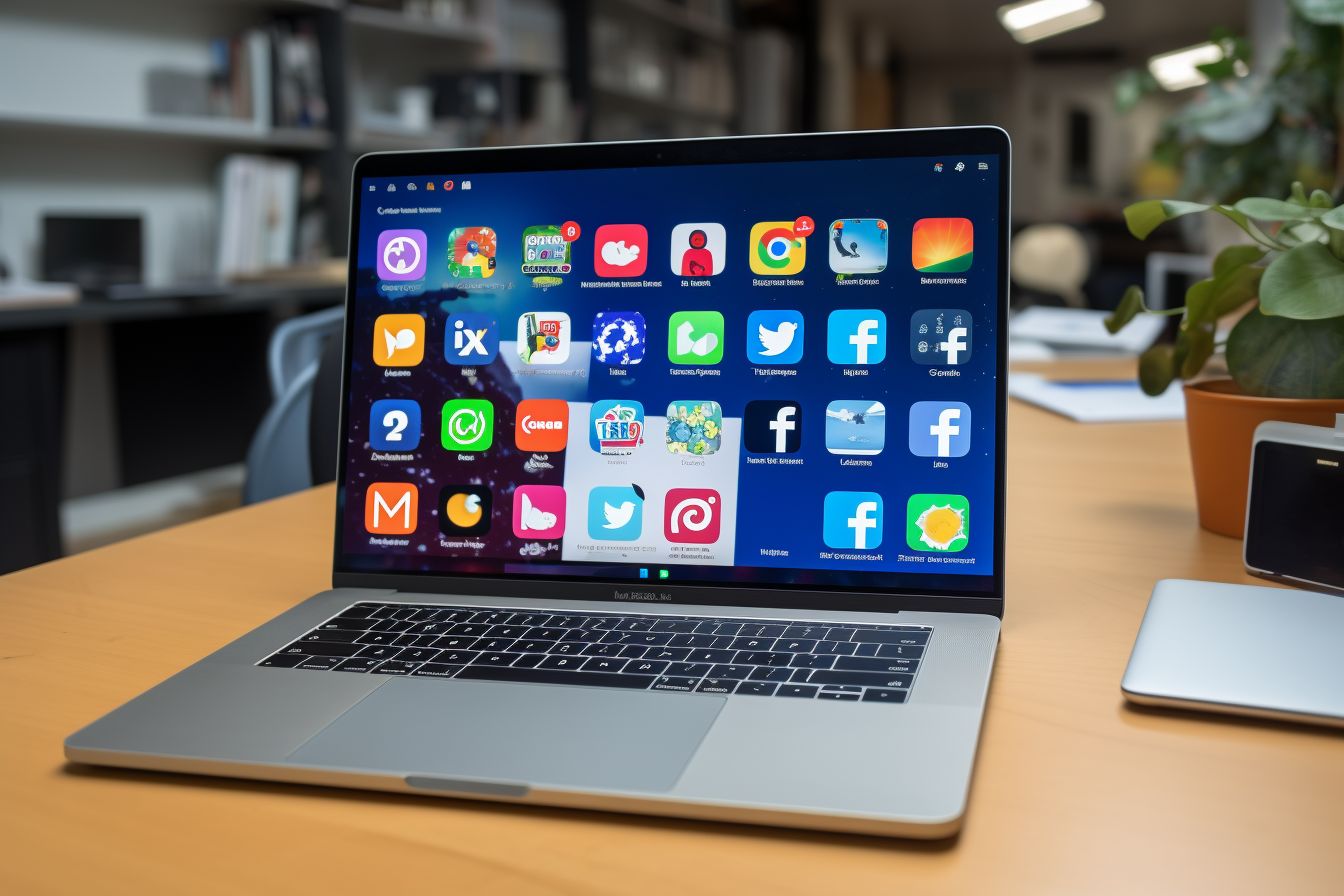Leveraging Advanced Strategies for Optimal Remote Social Media Work
Are you struggling to navigate the world of social media marketing while working remotely? With over 3.6 billion people using social media worldwide, a robust remote strategy has never been more critical.
This blog post will arm you with advanced strategies for streamlining your remote social media processes and supercharging your online impact. Ready to revolutionize your remote work game? Let’s dive right in!
Key Takeaways
- Clearly define roles and responsibilities within your remote social media team to ensure effective task organization and increased productivity.
- Utilize collaboration tools like Slack, Trello, Zoom, InVision, and Google Drive for seamless communication and real-time collaboration.
- Implement regular team check – ups and open communication practices to align with business goals, resolve challenges promptly, and foster trust among team members.
- Maintain a safe virtual work environment by setting up security measures, following best practices for cybersecurity, and establishing clear guidelines for file sharing and communication protocols.
The Rise of Remote Social Media Marketing
The digital landscape significantly shifted with the advent of COVID-19, propelling remote work into the mainstream business model. Industries across the globe have adapted to this change, and social media marketing is no exception.
The need for efficient collaboration from diverse locations has never been more pronounced.
As businesses closed their physical doors, they simultaneously opened digital ones wide. This move required a substantial presence on various social networks including Facebook, Instagram, and Twitter for continued brand awareness and community engagement.
In response, companies began assembling remote social media teams to manage their online presence effectively. These teams utilize advanced tools like Slack, Trello, Zoom among other software applications to coordinate tasks seamlessly in real-time.
The rise of remote social media marketing is not just a reaction to global circumstances but an evolution that acknowledges the power of tapping into geographically diverse talent pools.
It’s an intelligent approach that allows businesses to engage with multiple markets at once through tailored content created by people intimately familiar with those regions or demographics.
Understanding Your Remote Social Media Team
The roles and responsibilities of your remote social media team members should be clearly defined, and collaboration tools such as Slack, Trello, Zoom, InVision, and Google Drive can enhance their communication and task organization.
Roles and responsibilities
Establishing clear roles and responsibilities within your remote social media team is a vital step.
- The Social Media Manager provides oversight, sets strategic goals, and coordinates with other teams. They track key metrics and KPIs to measure the effectiveness of the social media strategy.
- Content Creators develop engaging posts for different social networks like Instagram, Twitter, and Facebook. They align their creations with brand guidelines to maintain consistency.
- Social Media Analysts study audience demographics and use tools like Google Analytics to gain insights into campaign performance.
- Community Managers nurture relationships by actively engaging with prospects and customers on social platforms.
- Project Managers ensure that team collaboration runs smoothly using remote work tools such as Slack, Trello, Zoom or Google Drive for real-time collaboration.
Collaboration tools
Effective remote collaboration tools are crucial for managing remote social media teams. They improve communication, promote accountability and enable real-time collaboration. Here is an introduction to some of the top tools:
- Slack: This tool aids in keeping team communication organized and seamless.
- Trello: It’s a project management tool that helps in organizing tasks and tracking progress.
- Zoom: A video conferencing app, it allows face-to-face meetings with your team members irrespective of their geographical location.
- InVision: With this tool, you can present your design ideas clearly and get quick feedback from your team.
- Google Drive: It simplifies the process of sharing files and documents within the team.
- ‘You Need a Wiki’: This tool helps in keeping all important information in one organized space for easy reference.
- Time Doctor: It promotes transparency by monitoring work hours and productivity levels.
Advanced Social Media Strategies for Remote Work
Implement regular team check-ups and open communication to ensure effective collaboration among remote social media teams. Proper use of collaboration tools and maintenance of a safe virtual work environment are also crucial for success in remote social media strategies.
Regular team check-ups
Regular team check-ups champion the smooth running of remote social media strategies. This beneficial practice ensures that the entire team is aligned with business goals and are progressing steadily on assigned tasks.
It also brings to light any challenges, allowing for swift resolution and productivity maintenance. With tools like Zoom or Slack, managers can connect with their teams easily and consistently review project updates effectively in real time.
Therefore, regular team check-ups stand as a crucial element of an efficient remote working model ensuring better task organization, higher quality content output, improved teamwork practices and solid trust building amongst members of a distributed team aiming to increase brand awareness through effective social media campaigns.
Open communication
Open communication is a crucial aspect of successful social media collaborations within a remote team. When team members openly share their ideas, feedback, and concerns, it fosters trust and strengthens teamwork.
This can be achieved through regular check-ins, virtual meetings, and utilizing collaboration tools that allow real-time communication. By promoting open communication, remote social media teams can effectively discuss strategies, brainstorm creative ideas, resolve conflicts promptly, and ensure everyone is on the same page.
This transparent approach leads to improved productivity and better outcomes for social media campaigns.
Creating an open communication environment also helps in maintaining a safe virtual work environment for remote teams. By encouraging team members to communicate openly about any issues they encounter or any support they may require ensures that everyone feels heard and supported.
It is important to establish clear channels for communication such as instant messaging apps like Slack or video conferencing tools like Zoom so that team members feel comfortable reaching out when needed.
Proper use of collaboration tools
Collaboration tools play a crucial role in remote social media work. To ensure effective communication and productivity, it is important to use these tools properly. Here are some key considerations:
- Choose the right tools: Select collaboration tools that meet the specific needs of your team, such as Slack for instant messaging, Trello for task organization, Zoom for video conferencing, InVision for design collaboration, and Google Drive for file sharing.
- Set clear guidelines: Establish protocols and expectations for using collaboration tools. Create guidelines on how team members should communicate, share files, and collaborate in real-time.
- Train your team: Provide training sessions or resources to help your team members become familiar with the features and functionalities of the collaboration tools being used. This will enable them to leverage the full potential of these tools.
- Use channels effectively: Utilize different channels within the collaboration tool for specific purposes. For example, use dedicated channels for different projects or topics to keep discussions organized and accessible.
- Foster transparency: Encourage team members to use collaboration tools openly by sharing their progress, updates, and challenges with the entire team. This promotes transparency and helps everyone stay informed.
- Stay organized: Ensure that all files and documents are properly categorized and stored in easily accessible folders within the collaboration tool. This makes it simpler for team members to find what they need when they need it.
- Regularly update shared documents: Make sure that shared documents are regularly updated with new information or changes made by team members. This avoids confusion or duplication of work due to outdated versions.
Maintaining a safe virtual work environment
Maintaining a safe virtual work environment is crucial for effective collaboration and communication within a remote team. It involves setting up proper security measures to protect sensitive data and ensuring that all team members follow best practices for cybersecurity.
Regular check-ins with team members can help identify any potential issues or concerns and provide support as needed. Open communication is essential in creating a safe space where team members feel comfortable sharing their thoughts and ideas without fear of judgment or repercussions.
By fostering a culture of trust and respect, remote teams can promote productivity and well-being while working together online.
To maintain a safe virtual work environment, it’s important to establish clear guidelines for task organization, project management, file sharing, and communication protocols. This helps prevent misunderstandings or miscommunications that could lead to errors or delays in work.
Additionally, using secure collaboration tools such as Slack, Rocket.Chat, Asana, Google Calendar, and Meet ensures that team members have access to real-time information while keeping sensitive data protected.
Tips for Handling Remote Collaboration Challenges
To handle remote collaboration challenges, avoid multiple asset sharing and reduce feedback time. Utilize backlog content and ideas to streamline the process.
Avoiding multiple asset sharing
To streamline remote collaboration and avoid confusion, it’s crucial to prevent the sharing of multiple assets through different communication channels. This can lead to inefficiency and lost files, causing delays in the social media management process.
Instead, consider utilizing a software system that allows for easy file upload, division, and integration. By centralizing your assets in one location, you can ensure that everyone on your team has access to the most updated versions of files, minimizing errors and promoting efficient collaboration.
Reducing feedback time
Reducing feedback time is crucial for efficient remote social media collaboration. Quick decision-making and timely revisions are essential to keep the workflow smooth and prevent delays in the social media management process.
By shortening the feedback loop or utilizing a single channel for feedback, teams can ensure fast iteration cycles and keep up with the demands of an ever-changing digital landscape.
This not only improves productivity but also allows for proactive responses to emerging trends and customer interactions. Don’t let long feedback loops slow down your social media strategy—optimize your processes for speed and agility to stay ahead of the competition.
Utilizing backlog content and ideas
- Businesses can enhance productivity and efficiency in remote work settings by utilizing backlog content and ideas.
- Organizing and prioritizing content ideas in a backlog is crucial for handling remote collaboration challenges.
- Leveraging the backlog helps businesses avoid running out of content and maintain a consistent social media presence.
- Planning ahead and ensuring a steady stream of content is possible with the utilization of backlog content and ideas.
- Regularly reviewing and updating the backlog is important to keep the content fresh and relevant.
Maximizing Productivity in Social Media Management
Maximize productivity in social media management by effectively scheduling content, utilizing mobile apps for on-the-go management, and double-checking all posts before publishing.
Content scheduling
Content scheduling is a key strategy for maximizing productivity in social media management for remote work. It helps in planning and organizing the creation and distribution of content across various platforms. Here are some important points to consider:
- Plan ahead: Schedule your content in advance to ensure a consistent presence on social media platforms.
- Use a content calendar: Create a calendar to outline the topics, formats, and posting dates for your social media content.
- Set realistic goals: Determine how often you want to post on each platform and align it with your business goals.
- Optimize posting times: Research the best times to engage with your target audience on each platform and schedule your posts accordingly.
- Schedule in batches: Dedicate specific time slots for creating and scheduling multiple posts at once to save time and streamline your workflow.
- Automate postings: Take advantage of social media management tools that allow you to schedule posts across multiple platforms simultaneously.
- Review and refine: Regularly analyze the performance of your scheduled content using metrics and analytics, and make adjustments accordingly.

Mobile app use
Mobile app use is a crucial aspect of maximizing productivity in social media management for remote work. With the use of mobile apps, social media professionals can manage their accounts on the go, providing them with flexibility and convenience.
These apps allow them to schedule and publish content, monitor engagement, respond to comments and messages, and track analytics—all from the palm of their hand. The COVID-19 pandemic has further emphasized the importance of mobile app use as businesses have shifted to remote work arrangements.
By utilizing these apps effectively, remote teams can stay connected, collaborate efficiently, and maintain an active social media presence regardless of location or time zone.
Double-checking content
Double-checking content is a crucial step in remote social media management. By reviewing and verifying the accuracy of posts, captions, and other materials before publishing, you can avoid mistakes and ensure that your messaging aligns with your brand’s voice and goals.
This not only helps maintain professionalism but also enhances engagement with your audience. Additionally, double-checking content allows you to catch any errors or misinformation that could potentially harm your reputation.
So take the time to thoroughly review all content before it goes live to ensure its quality and maximize the impact of your social media efforts.
Importance of Brand Guidelines in Remote Work
Brand guidelines are of utmost importance in remote work for advanced social media strategies. These guidelines provide a framework that ensures consistency and uniformity across all platforms, helping to maintain the brand’s identity and reputation.
With remote teams spread across different locations, it becomes crucial to have clear brand guidelines that outline the specific colors, fonts, voice, and tone to be used in social media content.
By adhering to these guidelines, businesses can avoid any confusion or inconsistent messaging that could potentially harm their brand image.
Comprehensive brand guidelines also play a significant role in maintaining a safe virtual work environment. They establish protocols for communication and collaboration among team members, ensuring that everyone is on the same page when it comes to representing the brand online.
Brand guidelines help establish work etiquette and task organization practices, promoting efficient project management within remote social media marketing teams.
Furthermore, having well-defined brand guidelines enables remote teams to effectively collaborate using various tools such as Slack, Trello, Zoom etc., fostering open communication channels and real-time collaboration on projects.
These guidelines set expectations for team members regarding file sharing processes, time tracking procedures and productivity analytics usage.
Overall,”branding guidlines” creates an essential foundation for success in remote work by providing structure and uniformity across all platforms while promoting effective collaboration within remote social media marketing teams
Proactively Engaging with Prospects and Customers
Proactively engaging with prospects and customers is a crucial aspect of successful social media strategies in remote work situations. By actively reaching out to your audience, you can build strong relationships and foster loyalty for your brand.
Utilizing various communication channels such as direct messages, comments, and live chats allows you to connect with your prospects and customers on a personal level, addressing their concerns or questions promptly.
This proactive approach not only helps in building trust but also opens up opportunities for valuable feedback and insights that can contribute to the growth of your business. Furthermore, regularly monitoring social media conversations related to your brand can provide you with real-time information about customer sentiment and preferences, enabling you to tailor your content accordingly.
Overall, proactively engaging with prospects and customers fosters meaningful connections that drive brand awareness, customer satisfaction, and ultimately business success.
Evaluating and Improving Your Remote Social Media Strategy
To ensure the success of your remote social media strategy, it is crucial to consistently evaluate and make improvements. Begin by assessing the collaboration tools being used and determining if they effectively meet the needs of your team, such as managing time effectively, supporting various communication channels, and accommodating all team members.
Additionally, take stock of your social media goals and metrics to identify areas where you can enhance performance. Regularly analyze audience demographics, engagement rates, reach, clicks, sentiment analysis, and other relevant data from platforms like Google Analytics and email analytics.
This information will provide insights into what is working well and where adjustments may be necessary. By continuously evaluating and improving your remote social media strategy based on real-time data and feedback from team members or agencies involved in the process, you can keep up with evolving trends in digital marketing while maximizing results for your business objectives.
Conclusion
In conclusion, implementing advanced social media strategies for remote work is essential for successful collaboration and productivity. Regular team check-ups, open communication, proper use of collaboration tools, and maintaining a safe virtual work environment are key elements to keep in mind.
By effectively handling remote collaboration challenges and maximizing productivity, businesses can thrive in the ever-changing world of social media marketing.

